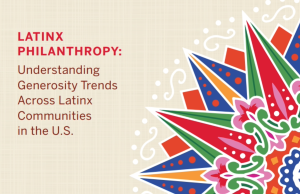A record $5.2 billion was granted via donor-advised accounts at Fidelity Charitable last year, up 17 percent from 2017.
The 2019 Giving Report, released today by Boston, Mass.-based Fidelity Charitable Gift Fund, indicates that almost 1.3 million grants were awarded to more than 140,000 charitable organizations. The 20-page report did not indicate how many contributions the donor-advised fund (DAF) received in 2018 but a spokeswoman estimated approximately $7.8 billion for the calendar year.
Last year’s giving report, detailing 2017 data, showed distributions of $4.5 billion through more than 1 million grants to almost 127,000 nonprofits. The DAF also reported $8.5 billion in unaudited contributions at the time.
The report notes that contributions to Fidelity Charitable may have spiked at the end of 2017 ahead of new tax regulations for 2018 while a volatile stock market in December 2018 may have put a damper on giving to the DAF.
The average giving account recommends 10.4 grants annually, about 80 percent more than the average 5.8 per year of a decade ago, according to Fidelity. Within a year of a $100 contribution, $37 has been granted to charities, according to a first-in, first-out analysis of contribution and grant dollars, a similar ratio to the previous report. Using that average would mean about $3.145 billion of the $8.5 billion in contributions (unaudited) in 2017 would have been granted within the past year. Within five years, $74 has been granted and after 10 years, $88 has gone to charities, with $12 remaining to be granted, according to Fidelity.
The number of giving accounts at Fidelity have more than doubled in the last decade, from 51,918 in 2009 to 123,114 in 2018, while the number of donors surpassed 200,000 last year, at 204,292. Donors established approximately 15,000 new giving accounts last year.
The median account balance during the past year was $17,760 and 58 percent of contributions came from accounts with less than $25,000. More than a third of contributions came from accounts with between $25,000 and $250,000 and 8 percent from those with $250,000 or more, according to the report.
The average grant was down slightly, from $4,246 in 2017 to $4,092 last year, a drop of about 3.6 percent. About 72 percent of grants went to organizations that donors previously supported, either as a regrant (47 percent) or a pre-scheduled grant (25 percent). Some 28 percent were new grants.
There were 582 individual grants of $1 million or more, up 15 percent compared to 2017.
Only 3 percent of grants were completely anonymous and just 5 percent included only the giving account name. Ninety-two percent of grants included the donor name and address so nonprofits could acknowledge the gift.
Contributions of non-publicly traded assets eclipsed $1 billion last year for the first time, up from $916 million in 2017 to $1.3 billion. More than 60 percent of contributions to Fidelity Charitable were in the form of non-cash assets, including publicly traded securities like stocks, bonds and mutual funds (47 percent), and non-publicly traded assets, like private or restricted stock, limited partnership interests and cryptocurrency (16 percent). Some 37 percent contributions were made in cash.
 Since Fidelity began accepting cryptocurrency in 2015, $106 million in contributions have been made, the majority in 2017 when $69 million was contributed at the height of bitcoin’s value. Last year, Fidelity received contributions of $30 million, compared with $7 million in 2016.
Since Fidelity began accepting cryptocurrency in 2015, $106 million in contributions have been made, the majority in 2017 when $69 million was contributed at the height of bitcoin’s value. Last year, Fidelity received contributions of $30 million, compared with $7 million in 2016.
The 20 most popular organizations at Fidelity Charitable last year, based on the number of accounts supporting an individual charity, were:
- Doctors Without Borders
- American Red Cross
- The Salvation Army
- St. Jude Children’s Research Hospital
- Planned Parenthood Federation of America
- Habitat for Humanity
- United Way
- Southern Poverty Law Center
- American Civil Liberties Union Foundation
- Nature Conservancy
- American Cancer Society
- Pan-Mass Challenge
- Alzheimer’s Association
- American Heart Association
- Wikimedia Foundation
- Natural Resources Defense Council
- Church of Jesus Christ of Latter-day Saints
- U.S. Fund for UNICEF
- Wounded Warrior Project
- Dana-Farber Cancer Institute
Doctors Without Borders received support from more than 7,000 accounts, surpassing American Red Cross, which ranked first in the previous year and received support from more than 6,000. The Salvation Army from more than 5,500 accounts. Other charities in the top 20 received support from 1,000 to 5,500 giving accounts.
The Natural Resources Defense Council and Southern Poverty Law Center both were new to the top 20 while Samaritan’s Purse, Oxfam America and the International Rescue Committee dropped off, likely due to a decline in natural disasters in 2018 as compared to 2017.
About 27 percent of grants went to religious organizations, followed by human services, 18 percent, and education, 13 percent. In terms of receiving grant dollars, education got the largest share, at 29 percent, followed by society-benefit, 18 percent, and religion, 15 percent.
Total assets in impact investments were $936 million last year, compared to $806 million in 2017, an increase of 16 percent. More than 4,000 donor-recommended grants were made to impact investing nonprofits, totaling more than $22 million. Support for impact investing nonprofits has almost doubled since 2013 when 1,953 grants were made, totaling $11.9 million.
Investment growth of giving account assets has generated an additional $5 billion available for grants since inception in 1991. Since inception, donors to Fidelity Charitable have recommended almost $35 billion in grants to to 278,000 charities.










